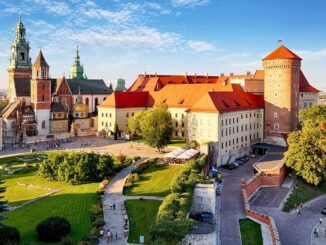With over fifty countries under my belt it seems like a good time to step off the beaten track a little and go to a country that has only 11,000 visitors from the UK each year. See what you’re missing out on in one of Europe’s youngest countries, Belarus.
With five international borders, the land locked East European Republic of Belarus has had its fair share of consequential history. It declared independence from the disintegrating Soviet Union in 1991, concluding seven decades of turmoil. After the 1917 Russian revolution Belarus became a founding constituent republic of the Soviet Union. The Polish-Soviet war of 1919-1921 saw it ceding almost half its landmass to Poland. And in 1939 the borders we now see with Russia, Ukraine, Poland, Latvia and Lithuania took shape. WWII devastated the country thinning its population by a third and reducing its economic capabilities.
That was very much in the past for this phoenix like fledgling country, I found not only economic growth, it has a thriving IT industry specializing in mobile phone applications supplying one billion people across 193 countries and it’s also hosting the second European Games this summer and has two unique UNESCO world heritage sites. Strong on culture from Baroque to a plethora of Brutalism architecture, modern wonders such as the National Library, a building that sits like a floating square orb to The Island of Tears in the capital Minsk, a man made shrine to the fallen in the Afghan war it is a particularly fine memorial with statues of grieving mothers, daughters and sisters awaiting the return of their loved ones.
Minsk is the capital that sits geographically in the centre of the country. A population of two million, a sense of wide-open space with broad boulevards, little traffic and some fantastic Soviet socialist modernism such as the 1934 Belarusian Parliament building in the vast Independence Square with a now incongruous large statue of Lenin. The advent of the up coming European Games has created a flurry of legacy stadia from a velodrome, a supped-up ice hockey rink (Belarus’ unofficial national sport) and much more in fact they have 3,600 sports facilities in the capital alone. There’s even a temporary beach football pitch. They are as one might say ‘match fit’.
Out of the city, which I might add has a splendid vibrant nightlife with plenty of bars and nightclubs as well as restaurants, there is green and rolling countryside almost everywhere. One of my first stops was to Mir Castle about 90km southwest from Minsk. The ‘Medieval Flower’ or Mir Castle to give it the correct title, is a UNESCO World Heritage Site and is a Polish Gothic style building with five towers surrounding a courtyard citadel. The 16th century castle has had much iteration over the years including some fine Renaissance balconies and porches.
Inside (there are guided tours in many languages available) it opens up to reveal fine art works, paintings and even photographs of how the castle was used until the advent of WWII. Part of the castle is now a hotel so you can live like a king or queen for a few nights anyway if you like. It’s a great building that will take a couple of hours to explore properly. I was rewarded with a large feast served in the restaurant in the old dungeons of the castle, very atmospheric with hearty food.
Not far away from Mir is Nesvizh, an historic town that offers another UNESCO World Heritage Site. Nesvizh Castle rests on a cushion of green that seemingly floats on the lake that surrounds it. Once one of the most important castles in Poland, it now sits squarely in Belarus. Built on land owned by the Radziwill family since 1533, construction of the castle started 1584. A square three-story château initially, over the centuries it has grown into a magnificent palace. The family were resident until 1939 and the advancement of Russia’s Red Army. These days visitors are free to wander around the rooms taking in the kind of lifestyle many of us dream about. The building is being continually restored and has been brought to life with original or of the period furniture and the rooms dressed, as they would have been. There are fine portraits aplenty and on my visit there, was chamber music being played in various rooms by musicians dressed in period costume. The objects d’art around the palace are beautiful and the presentation of the building is as if the owners had just popped out giving a real sense of history.
Belarus is a young country once beleaguered by its past but now standing on its own. The advent of the 2nd European Games has certainly put it on the map, but I’d recommend venturing further than the capital to get to see the real Belarus. Full of beautiful manageable countryside (there are no mountains in Belarus), pretty villages where time has stood still, great food (they offer a mean BBQ almost everywhere) and in the summer at least a very pleasant climate. But should you choose to visit in winter the castles will look their most romantic covered in snow but be aware that temperatures regularly drop to -20°. So that’s a fur lined parker, snow boots, warm gloves, hat and a warm woolie jumper on the packing list!
For more information on this beautiful little country please visit www.belarus.by
Author Bio:
Neil Hennessy-Vass is Contributing Editor for Our Man On The Ground as well as a widely-published globetrotting food and award-winning travel writer and photographer.
Photographs by Neil Hennessy-Vass








Be the first to comment